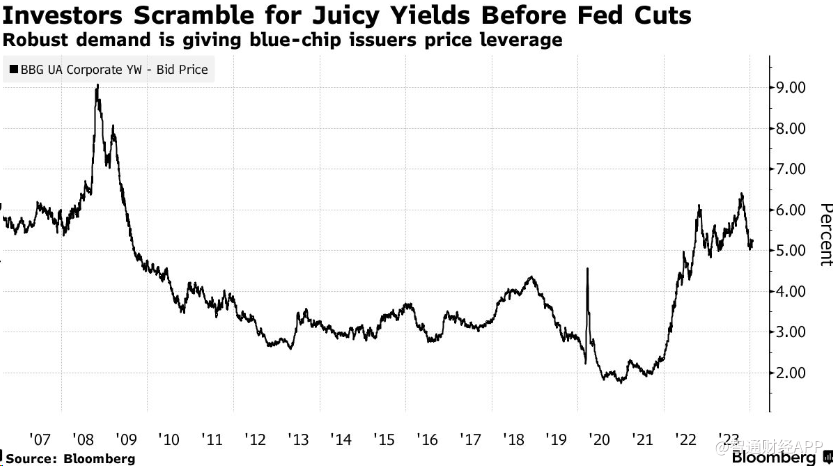Procter GambleThe $1.35 billion bond sale sent one of the clearest signals yet, that is, investors poured into the corporate bond market before the Federal Reserve cut interest rates. When investors bought P&G's newly issued 10-year bonds, they demanded a yield only 37 basis points higher than the U.S. Treasury Bond for the same period. That would be the lowest risk premium for a 10-year corporate bond issue in the U.S. investment-grade market, according to data compiled by Bloomberg from 2000.
"It's as if everyone woke up on Jan. 1 and realized that yields were at their highest levels in nearly 20 years," said Scott Kimball, chief investment officer at Loop Capital Asset Management. "From a capital structure perspective, it's hard to ignore that given that stock valuations are quite high."
Investors flock to high-rated corporate bonds ahead of Fed rate cuts
A broad measure of investment-grade corporate bond yields surged to nearly 6.5% late last year, a new high in more than 14 years, according to data compiled by Bloomberg.
Procter & Gamble's bond offering comes amid a frenzy in the primary market, with new issuance up 32% year-on-year so far in 2024.
More and more investors are speculating that the Federal Reserve will implement monetary easing at some point this year. However, with the timing of interest rate cuts uncertain, investors have begun to buy new high-rated bonds in large quantities, because high-rated bonds usually have a long duration and will become attractive investments if interest rates start to fall.
This week, the average additional yield of corporate bonds held by investors relative to U.S. Treasury Bond has dropped to 96 basis points, slightly below the lowest level in two years. Meanwhile, the spread on P&G's 10-year bond narrowed from about 55 basis points in earlier discussions, according to a person familiar with the matter.


